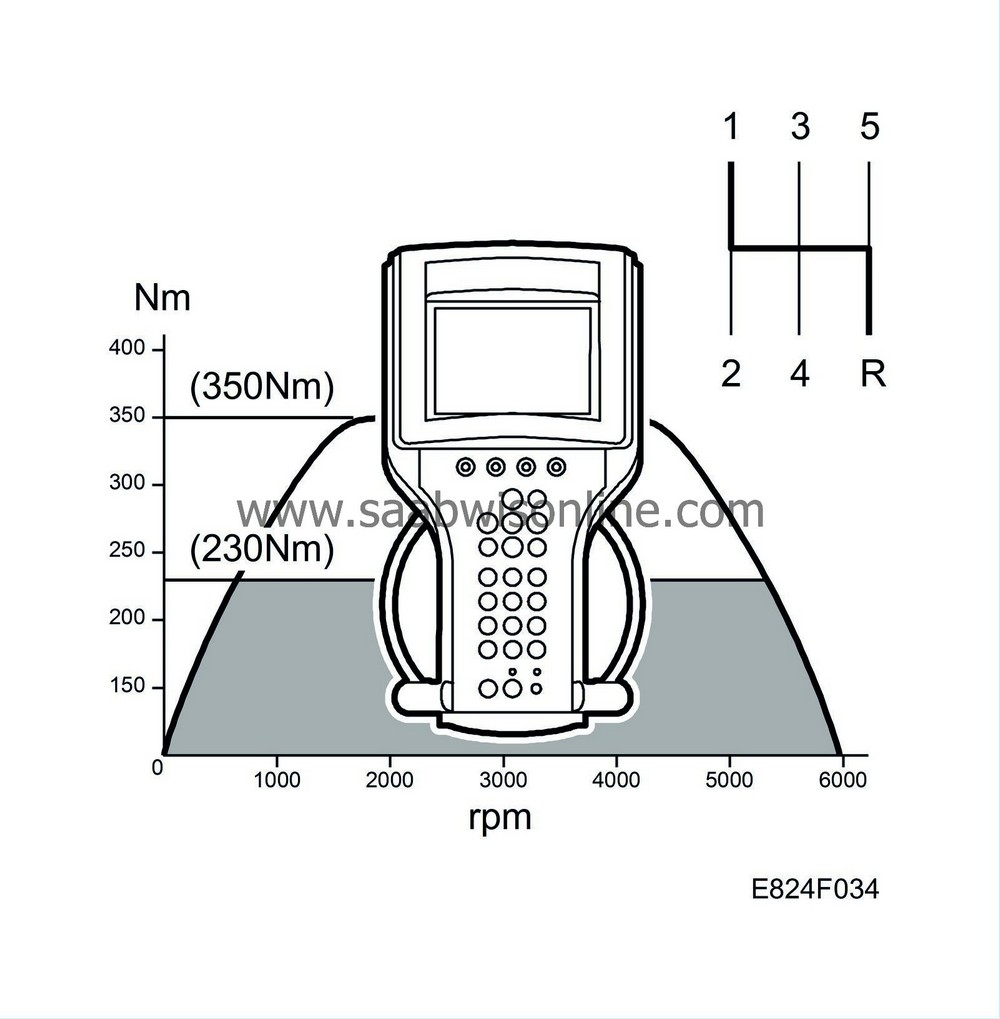Loss of power
Read the instructions below then
start the fault diagnostic procedure.
Symptom: Loss of power
Fault symptoms
Loss of power
Conditions
The following conditions apply for this fault symptom:
|
•
|
No diagnostic trouble codes in the car with the symptom description in question.
|
|
•
|
Pedal cable correctly adjusted.
|
Diagnostic help
First check that the three pressure sensors do not deviate by more than 10 kPa from each other when the engine is switched off. This check is performed because the mass air flow will later be compared with the intake pressure, which must therefore be correct. If the mass air flow does show a deviation, first check for air leaks before suspecting a fault in the mass air flow sensor.
Then check the charge air control valve, knock control function and fuel supply. Knock control is a normal engine function.
It is difficult to determine how much knocking should be allowed as it depends on the circumstances. If the engine displays a tendency to knock, check that the ignition discharge module is properly screwed down and that the correct type of spark plugs is used. To test the ignition discharge module, use
83 95 675 Test equipment, DI system
.
The following factors increase knocking tendency:
|
•
|
High coolant and outdoor temperatures.
|
Diagnostic tool functions related to this fault are:
|
•
|
Atmosphere absolute pressure, in kPa.
|
|
•
|
Charge air absolute pressure, in kPa
|
|
•
|
Manifold absolute pressure, in kPa.
|
|
•
|
Air mass deviation from requested, in %.
|
|
•
|
Air mass deviation from calculated, in %.
|
|
•
|
Engine torque used at actual rpm, in %.
|
|
•
|
All readings in the ”MASS AIR FLOW REQUEST” group.
|
See also description of test readings and activation under ”Fault diagnosis, general” for more information.
Check the wiring
|
Note
|
|
Jiggle the leads and in-line connectors at various points and in different directions to detect any intermittent breaks or short circuits in the wiring. Observe the multimeter, test lamp or diagnostic tool while doing this.
|



